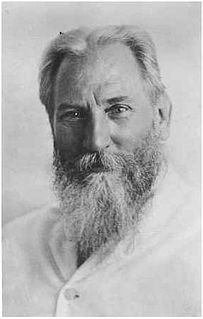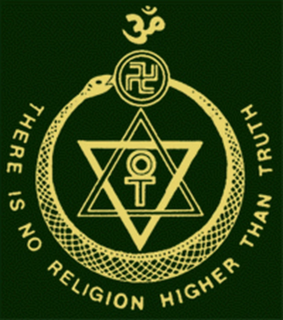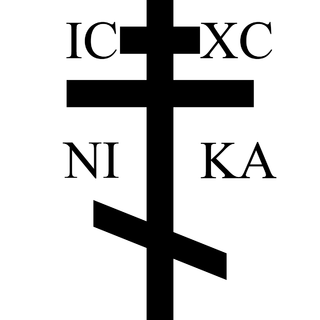Related Research Articles

Charles Webster Leadbeater was a member of the Theosophical Society, Co-Freemasonry, author on occult subjects and co-initiator with J. I. Wedgwood of the Liberal Catholic Church.

In the religion of theosophy and the philosophical school called anthroposophy, the Akashic records are a compendium of all universal events, thoughts, words, emotions and intent ever to have occurred in the past, present, or future in terms of all entities and life forms, not just human. They are believed by theosophists to be encoded in a non-physical plane of existence known as the mental plane. There are anecdotal accounts but no scientific evidence for the existence of the Akashic records.

A subtle body is a "quasi material" aspect of the human body, being neither solely physical nor solely spiritual, according to various esoteric, occult, and mystical teachings. This contrasts with the mind–body dualism that has dominated Western thought. The subtle body is important in the Taoism of China and Dharmic religions such as Hinduism, Buddhism, and Jainism, mainly in the branches which focus on tantra and yoga, where it is known as the Sūkṣma-śarīra. However, while mostly associated with Asian cultures, non-dualistic approaches to the mind and body are found in many parts of the world.

The astral body is a subtle body posited by many philosophers, intermediate between the intelligent soul and the mental body, composed of a subtle material. In many recensions the concept ultimately derives from the philosophy of Plato though the same or similar ideas have existed all over the world well before Plato's time: it is related to an astral plane, which consists of the planetary heavens of astrology. The term was adopted by nineteenth-century Theosophists and neo-Rosicrucians.

The astral plane, also called the astral realm or the astral world, is a plane of existence postulated by classical, medieval, oriental, and esoteric philosophies and mystery religions. It is the world of the celestial spheres, crossed by the soul in its astral body on the way to being born and after death, and is generally believed to be populated by angels, spirits or other immaterial beings. In the late 19th and early 20th century the term was popularised by Theosophy and neo-Rosicrucianism.
In esoteric cosmology, a plane is conceived as a subtle state, level, or region of reality, each plane corresponding to some type, kind, or category of being.

The Rosicrucian Fellowship (TRF) was founded in 1909 by Max Heindel with the aim of heralding the Aquarian Age and promulgating "the true Philosophy" of the Rosicrucians. It claims to present Esoteric Christian mysteries or esoteric knowledge, alluded to in Matthew 13:11 and Luke 8:10, to establish a meeting ground for art, religion, and science and to prepare the individual through harmonious development of the mind and the heart for selfless service of humanity.

Max Heindel was a Danish American Christian occultist, astrologer, and mystic.
The mental body is one of the subtle bodies in esoteric philosophies, in some religious teachings and in New Age thought. It is understood as a sort of body made up of thoughts, just as the emotional body consists of emotions and the physical body is made up of matter. In occult understanding, thoughts are not just subjective qualia, but have an existence apart from the associated physical organ, the brain.

The etheric body, ether-body, or æther body, is the name given by neo-Theosophy to the subtle body propounded in esoteric philosophies as the first or lowest layer in the human energy field or aura. The etheric body is said to be in immediate contact with the physical body and to sustain it and connect it with "higher" bodies. It is also said to consist of a finer substance, more pure and composed of smaller particles, than the ordinary matter of the physical plane.

A round, in the esoteric cosmology of Theosophy, Anthroposophy and Rosicrucianism, is a cosmic cycle or sequence by which an evolving reincarnating being passes through the various stages of existence as the Earth, the Solar System or the Cosmos comes into and passes out of manifestation.

The Ancient Wisdom is a book by Annie Besant published in 1897, as per the dedication in the leader of the undated first pressing.

Neo-Theosophy is a term, originally derogatory, used by the followers of Helena Blavatsky to denominate the system of Theosophical ideas expounded by Annie Besant and Charles Webster Leadbeater following the death of Madame Blavatsky in 1891. This material differed in major respects from Blavatsky's original presentation, but it is accepted as genuinely Theosophical by many Theosophists around the world.
Causal plane is a term used in Neo-Theosophy, some contemporary Vedanta, the New Age,, and sometimes Occultism, to describe a high spiritual plane of existence. However, there is great variation between the different definitions.

Arthur Edward Powell was a Theosophist whose books were published beginning in the early 1900s. He studied the major esoteric works of Helena Blavatsky, Charles Webster Leadbeater and Annie Besant.

In Theosophy, Maitreya or Lord Maitreya is an advanced spiritual entity and high-ranking member of a reputed hidden spiritual hierarchy, the Masters of the Ancient Wisdom. According to Theosophical doctrine, one of the hierarchy's functions is to oversee the evolution of humankind; in concert with this function Maitreya is said to hold the "Office of the World Teacher". Theosophical texts posit that the purpose of this Office is to facilitate the transfer of knowledge about the true constitution and workings of Existence to humankind. Humanity is thereby assisted on its presumed cyclical, but ever progressive, evolutionary path. Reputedly, one way the knowledge transfer is accomplished is by Maitreya occasionally manifesting or incarnating in the physical realm; the manifested entity then assumes the role of World Teacher of Humankind.

Within the system of Theosophy, developed by occultist Helena Blavatsky and others since the second half of the 19th century, Theosophical mysticism draws upon various existing disciplines and mystical models, including Neo-platonism, Gnosticism, Western esotericism, Freemasonry, Hinduism and Buddhism.

Theosophy is a religion established in the United States during the late 19th century. It was founded primarily by the Russian Helena Blavatsky and draws its teachings predominantly from Blavatsky's writings. Categorized by scholars of religion as both a new religious movement and as part of the occultist stream of Western esotericism, it draws upon both older European philosophies such as Neoplatonism and Asian religions such as Hinduism and Buddhism.

Christianity and Theosophy, for more than a hundred years, have had a "complex and sometimes troubled" relationship. The Christian faith was the native religion of the great majority of Western Theosophists, but many came to Theosophy through a process of opposition to Christianity. According to professor Robert S. Ellwood, "the whole matter has been a divisive issue within Theosophy."
References
- ↑ Blavatsky, H.P., The Key to Theosophy , 1889
- ↑ Charles Leadbeater (1912 - 1937), A Textbook of Theosophy , Madras, India: Theosophical Publishing House, 1912 - 1937.
- ↑ Besant, Annie. Man's life in this and other worlds, Theosophical Publishing House, Adyar, 1913
- ↑ Farthing, Geoffrey A., The Etheric Double:The Far-Reaching Effects of a false Assumption , from a booklet in private circulation dated June 1995, reprinted from Theosophy World
- ↑ Heindel, Max, The Rosicrucian Mysteries (Chapter III: The Visible and the Invisible Worlds), 1911, ISBN 0-911274-86-3
- ↑ A Student, Etheric Vision and What It Reveals , ISBN 0-911274-59-6, 110 pages
- ↑ Heindel, Max, The Rosicrucian Cosmo-Conception (Chapter I.2, The Etheric Region of the Physical World), 1909, ISBN 0-911274-34-0